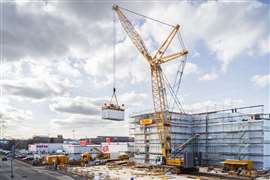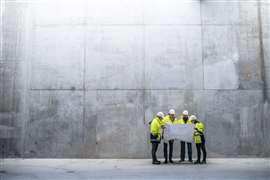Read this article in Français Deutsch Italiano Português Español
The UK’s Building Safety Act: The impacts so far and major issues ahead
26 June 2025
It has now been over two years since the UK’s Building Safety Act 2022 first came into force, with significant implications for the construction industry from a design, build, and management perspective.
 Image: John Gomez via AdobeStock - stock.adobe.com
Image: John Gomez via AdobeStock - stock.adobe.com
Aimed at ramping up safety standards in design and construction, the new regime has raised the bar on what’s expected of organisations and individuals in the industry and upped the ante on accountability.
With many of the Act’s new rules and requirements being implemented in stages over time – and more still to come – contractors, designers and infrastructure owners need to stay abreast of their upcoming as well as current obligations. Failure to do so could have serious consequences. Here we assess some of the major opportunities and challenges so far and discuss how to prepare for what lies ahead.
Embracing opportunities and challenges
The BSA imposes additional duties on contractors, over and above those set out under the Construction (Design & Management) Regulations 2015. Chief amongst the issues many are still grappling with are:
Getting to grips with contractor competency requirements: Contractors must ensure that all staff (including subcontractors) working on a project are competent to do so. This is challenging because the description of competency is vague: being broadly defined as having the necessary ‘skills, knowledge, experience and behaviours’. Clearly, given the diversity of disciplines across the industry, it’s difficult to issue specific requirements for all professions.
Therefore, designers and contractors should familiarise themselves with HSE guidance on competency, such as PAS 8671 and PAS 8672. This provides practical advice on technical compliance, management of design and construction risks, information management and liaising with other duty holders. Principal contractors should also regularly refresh technical training and take steps to ensure that the sector or industry experience of every professional on site is commensurate to the task.
Establishing the ‘golden thread’: Arguably the greatest recent change to the construction process is the requirement for a ‘golden thread’ of information to be made available throughout the life of the building. The technology required to implement this already largely exists in the form of BIM; however, to monitor the health and safety of their installation in real time, construction professionals and building operators must become more adept at using it.
The widespread adoption of active record keeping and monitoring could radically improve the operations and maintenance of new and existing installations. In the past, keeping track of operations and maintenance data, installation records and building environmental data was onerous. Mandating that a centralised system is put in place, whilst initially creating an additional layer of administration, should effectively align maintenance, repair and renewal works across multiple systems, as well as with industry standards and real-time building data. This can limit the failure of systems and disruption caused in remedial and regeneration works, particularly in ageing buildings.
Awareness of new claims limits: The BSA significantly extends the period within which claims can be made – a fact that is often overlooked. The time limit on claims relating to works carried out after June 2022 is now 15 years (up from six), and 30 years for works carried out before that date. Contractors should ensure that warranties and insurances cover the extended timeframes and identify projects which may be at risk of claims due to the extension. Failure to do so could be extremely costly.
Significant issues in store
The legislation is designed to be iterative, so developers and contractors must continually refresh their knowledge of the Act to make sure they fully understand the impacts on their projects and businesses, and that further changes and updates are on their radar early on. Coming up, they should:
Get ready for the Building Safety Levy: which is due to be introduced later this year for all new premises requiring Building Control approval. This will largely increase the project’s cost to clients, so principal contractors should be prepared to advise inexperienced clients on the likely impact.
Get ahead of the game on cladding remediation: An even more significant issue on the horizon is the Cladding Remediation Acceleration Plan. This is an important piece of the new legislation which mandates the removal of all unsafe cladding from high-risk buildings, and is designed to prevent future tragedies after the Grenfell Tower fire disaster. By 2030, privately-owned residences over 11m in height must have had the cladding removed or have a fixed date for completion of the works.
It might seem like there’s plenty of time in hand, but it’s vital that to start getting ahead of the game now. With over 12,000 properties currently needing remedial action in the UK, the reality is that getting them all surveyed and having the works carried out (or even booked in) by the deadline could pose significant logistical and resourcing challenges. Some local authorities are already struggling to ensure they have enough qualified building surveyors or fire engineers available to carry out surveys, and it’s likely that their services will be in increasing demand as 2030 approaches. The penalties for non-compliance could be severe – as well as fines, developers, contractors and property owners could face criminal changes if they fail to meet their obligations under the law.
Firms would therefore be well advised to develop a remediation plan if they haven’t already done so and start taking action immediately. This could include evaluating their own resources and undertaking their own surveys. Doing so should avoid the risk of leaving it too late and finding that no local authority (or independent) surveyors are available nearer the time. It will also help them assess the costs involved on each building and so enable them to understand the full scale of their liabilities and plan for getting the remedial works done.
The bill for putting cladding problems right is likely to be significant. We estimate an average cost of £5 million for each building, meaning that in total, cladding remediation could be a multi-billion pound issue. It’s also worth noting that a recent court case (BDW Trading Limited v Ardmore Construction Limited) has crystallised developers’ duties to correct building defects, and more such cases could follow. Indeed the scale of the liabilities facing the construction industry could be similar to those of the PPI (payment protection insurance) mis-selling scandal that affected UK financial institutions. Given that the construction industry operates on thin margins, all this could put severe strain on the bottom line. Managing the costs over time and ensuring that financial penalties are not incurred on top, is essential.
Seizing the initiative
The changes brought about by the BSA have been sweeping, and they are far from over - indeed some of the most critical elements still lie ahead. Contractors and designers must put building safety front and centre of their operations, and those that take the initiative to address their increasing obligations sooner rather than later will have a better chance of turning challenges into opportunities, mitigating the risks that lie ahead and keeping the associated costs under control as far as possible. The time for action is now.
About the author
Niall Tutt is a manager with Alvarez & Marsal Disputes and Investigations in London, UK.
Mohammad Yadollahi is a senior director with Alvarez & Marsal Disputes and Investigations in London, UK.
STAY CONNECTED


Receive the information you need when you need it through our world-leading magazines, newsletters and daily briefings.
CONNECT WITH THE TEAM










